Kylemore Abbey Gardens: An Irish garden that 'is one of earth's wonders'
Thanks to the determination of the resident community of Benedictine nuns, the eight-acre garden at Kylemore Abbey Gardens in Connemara, Ireland, has been restored. Once lockdown lifts, visitors can once again enjoy a Victorian survival in an extraordinary setting. Mary Hackett paid a visit; photographs by Zara Napier.
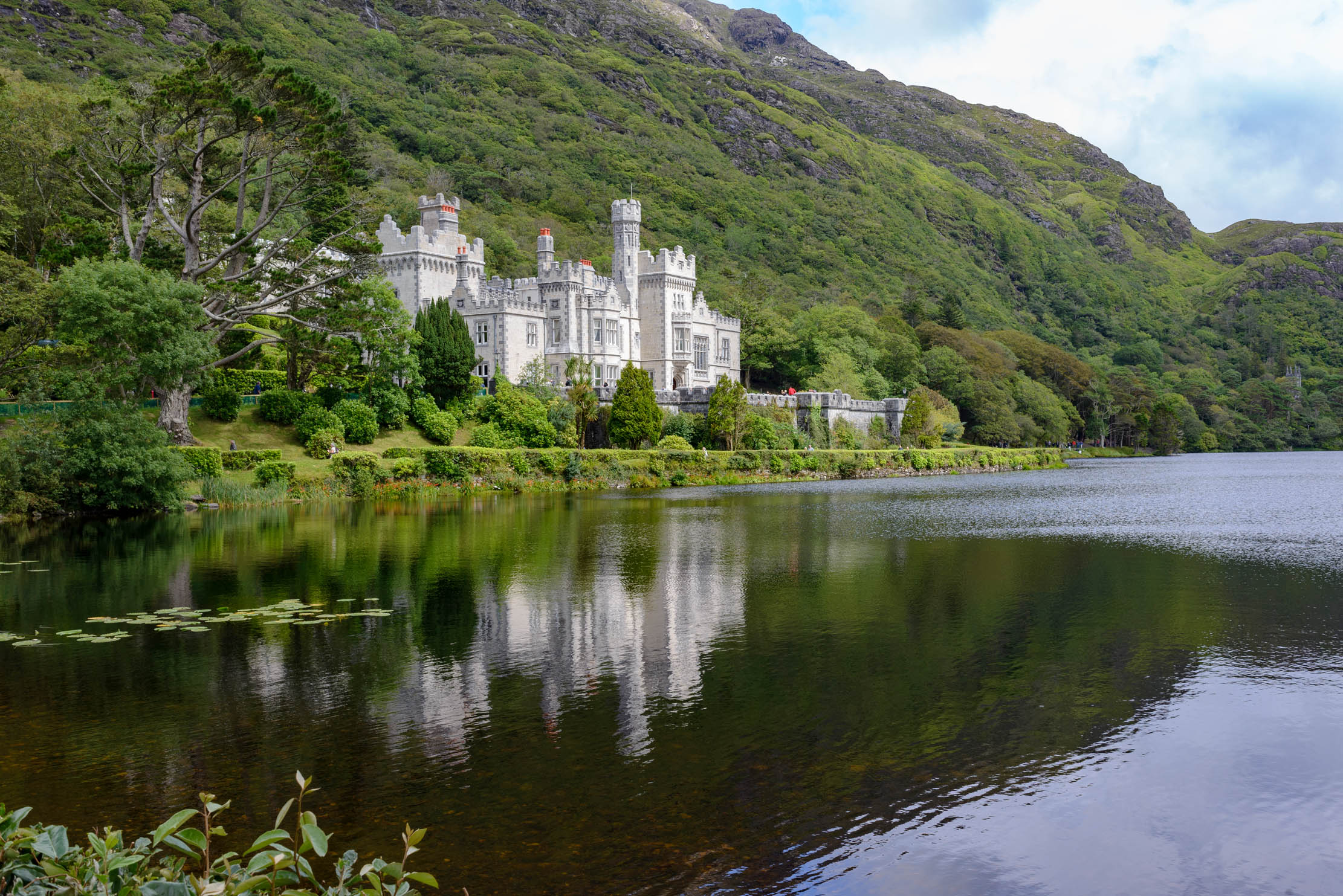

The magnificent Kylemore Castle in Connemara in the west of Ireland was built by Manchester-born Mitchell Henry, a Harley Street eye surgeon and pathologist who became the Liberal MP for Co Galway and much-loved landlord. Intended as an elaborate tribute to his wife, Margaret, the castle sheltered the growing family until 1902, when it was bought by the 9th Duke of Manchester. It was turned into an abbey when a community of Benedictine nuns, shelled out of their Ypres convent in 1914, settled here in 1920. The nuns have remained to this day and, in 1995, thanks to their efforts, work started on the restoration of the original Victorian walled garden.
Still looking today much as it did when it was built, the castle has as its background the sessile oak and rhododendron that wrap Dúchruach mountain and, on a sunny day, its reflection gleams in the black water of Lough Pollacapul, exactly as Irish architect James Franklin Fuller had intended — the view the Henrys saw on honeymoon in the 1840s.
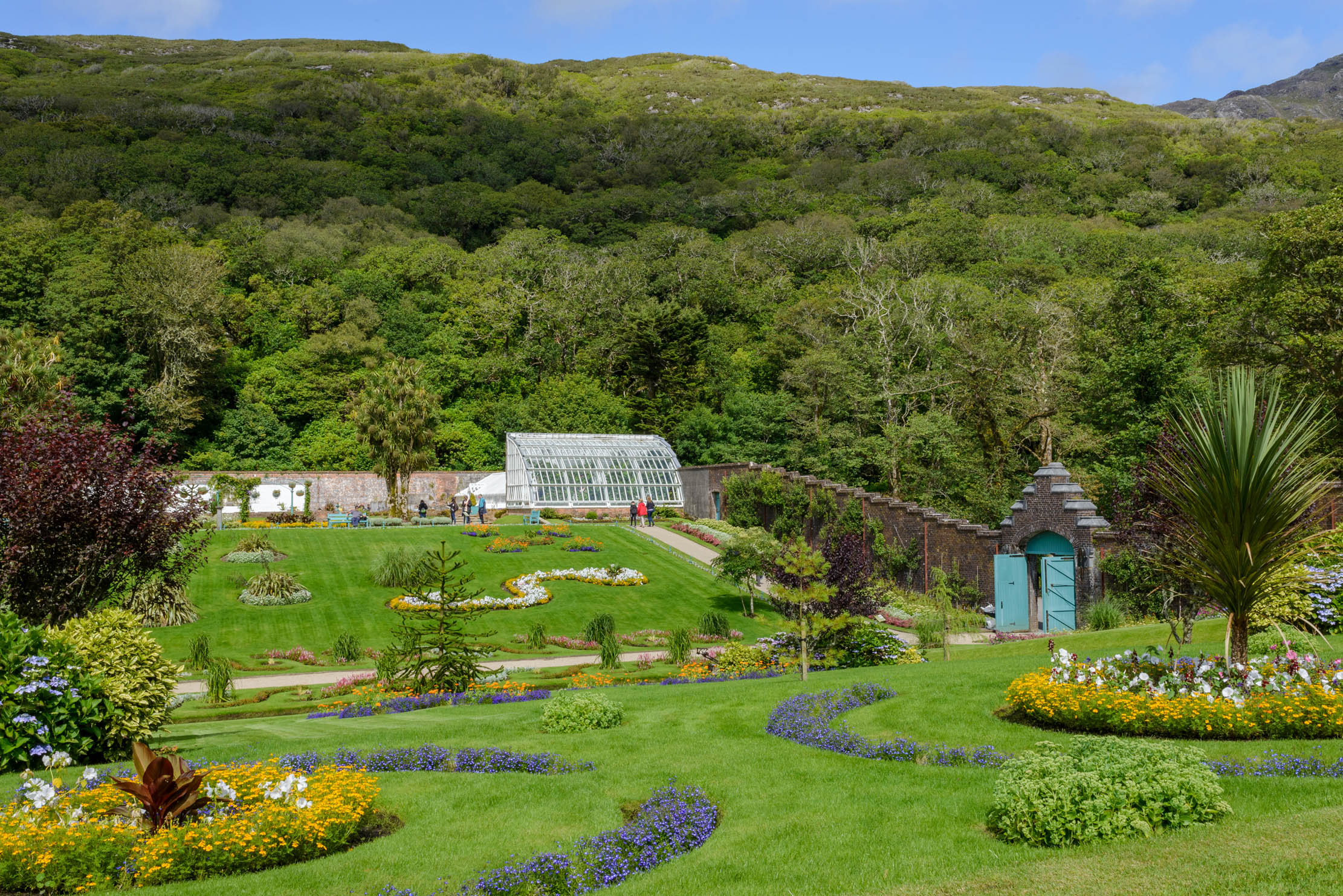
In the 1860s, the region was pitifully poor. Cholera and famine had devastated the population and two-thirds of the indebted local estates were up for sale. Henry was acclaimed in the medical profession, as a young Fellow of the Royal College of Surgeons, but when his father died and left him the successful family cotton-merchant business, he turned to Ireland. He bought the 15,000-acre estate and commissioned Kylemore Castle in 1867, improving the boggy ground, creating a productive estate and campaigning for compassion in consideration of the ‘Irish problem’.
Preparing the narrow, rocky site was so difficult that the builders left some of the rock in place and built the staircase over it. At 40,000sq ft, the completed castle dwarfed the local shooting lodges and its 70-plus rooms had every modern convenience, including indoor plumbing, gas lights and fire hydrants.
A mile west of the house, in the hottest and brightest spot in the grounds, Henry created an eight-acre garden. Part pleasure ground, part scientific experiment, the garden challenged both the local conditions and traditional estate management. Salt-laden wind and rain from the Atlantic stunt and shred planting in Connemara. Records suggest that Henry planted up to 300,000 trees a year over several years for shelter and for ornamentation. Some of the Monterey pines, Pinus radiata, and Monterey cypresses, Hesperocyparis macrocarpa, used in the original windbreaks are still in position. Victorian favourites Rhododendron ponticum, pampas grass and New Zealand flax continue to flourish. Indeed, control of R. ponticum is an issue for the 21st-century estate managers.
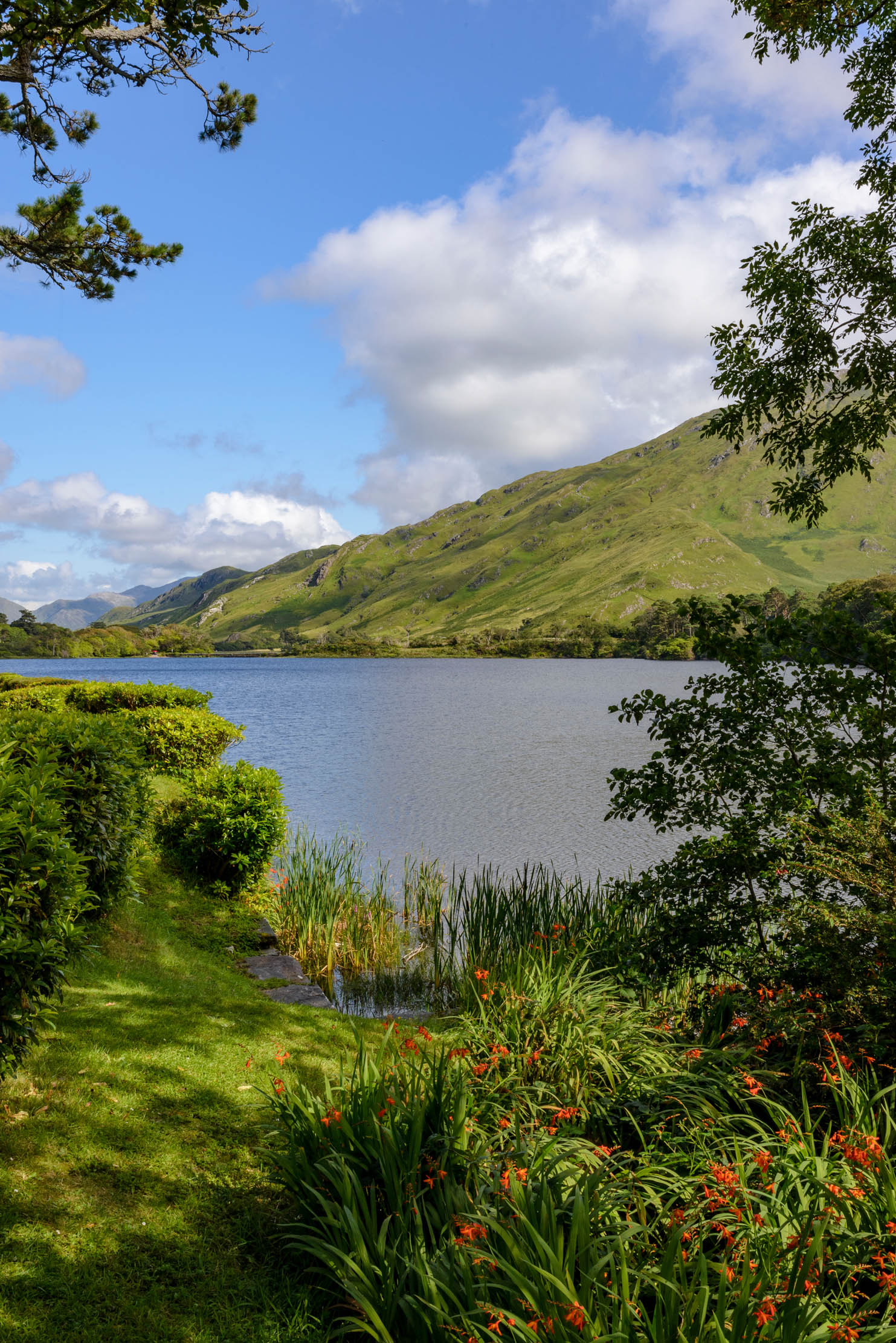
The Victorians were the first to treat the art of growing grass as a serious pursuit and Henry drew on his scientific and industrial background to drain, lime and contour Kylemore. A visitor in 1872 noted that ‘the beauty of the flowerbeds with the rich emerald green of the grass invest the whole area with inexpressible charm’. Victorian gardeners introduced lightness into their gardens by cutting flowerbeds in the shape of circles, rows and ribbons and, at Kylemore, the flowerbed templates include a patriotic shamrock.
‘The two sides of our lawn are not mirror images,’ head gardener Anja Gohlke points out. Topography, rather than strict symmetry, has dictated how the garden looks. ‘This part of the garden involves a lot of labour. To keep the slanted edges of our beds sharp, the planting medium is up to 9in below the lawn edge and the planting is at least 1ft away from the lawn: we do a lot of hoeing.’
Sign up for the Country Life Newsletter
Exquisite houses, the beauty of Nature, and how to get the most from your life, straight to your inbox.
The strong colours in the geometrical beds are carefully judged. When restoration began in 1995, the team worked to a late-Victorian planting plan. ‘The planting is as true as we can make it to what would have been used in the 1880s to 1890s,’ says Anja.
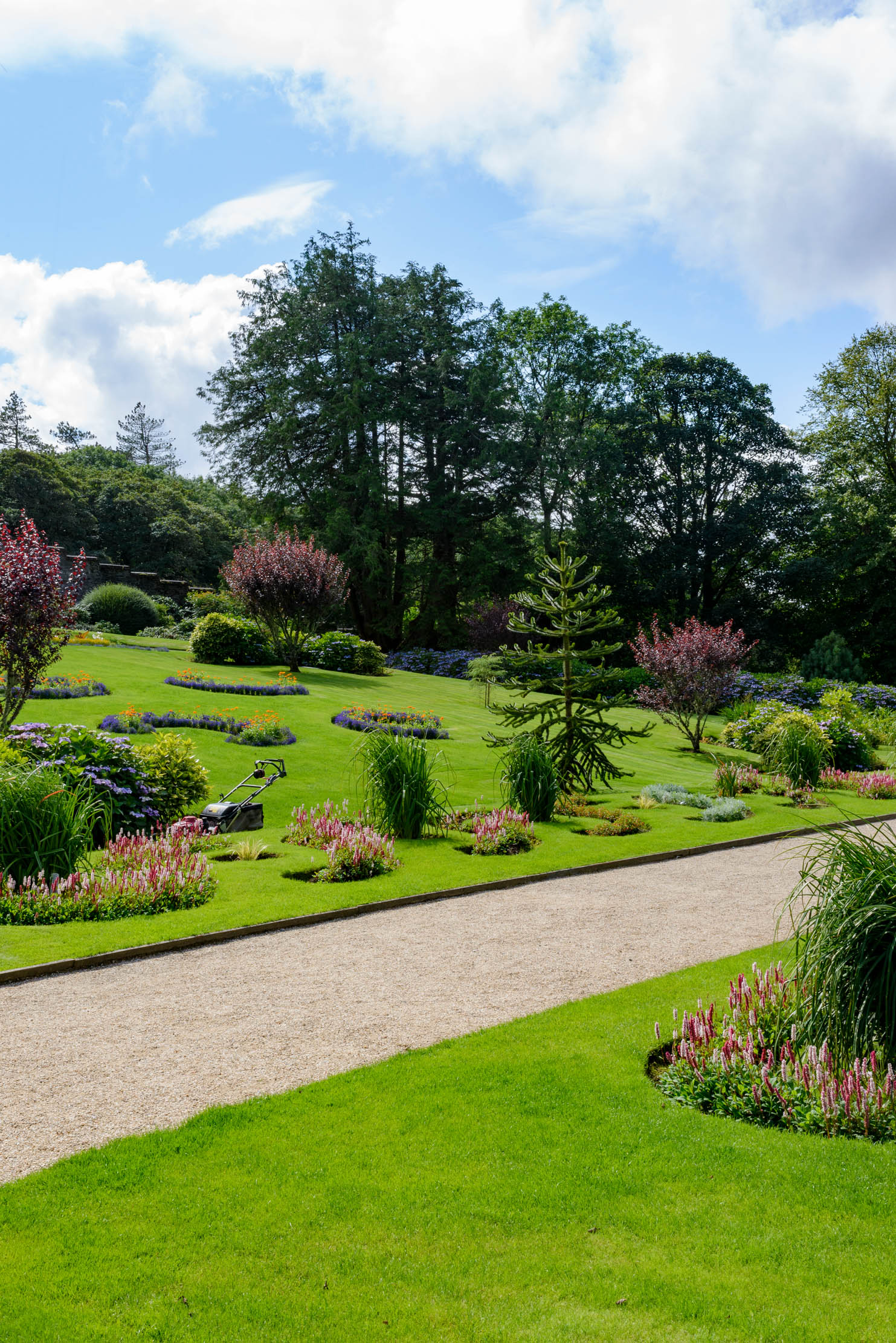
Every year, she researches new varieties of annual for the formal beds. Lobelia, alyssum, nasturtium and snapdragon are a few of the species laid out in Victorian patterns, typically with an outer ring of a vibrant colour, perhaps a dark-blue lobelia, enclosing an inner planting of complementary colours.
‘In recent planting,’ says Anja, ‘I’ve used Canna iridiflora with Calendula ‘Orange King’, Tagetes tenuifolia and Antirrhinum majus ‘Defiance’ with an edging of Lobelia erinus ‘Crystal Palace’.’ Variegated plants fit well into Victorian schemes. ‘We find that the perennial shrub Anaphalis triplinervis with its felted, grey leaves also does well here.’
The final component in a Victorian planting scheme was often something exotic, as a punctuation plant at the centre of the bed. ‘I enjoy using the monkey-puzzle tree Araucaria araucana as a dot feature in our parterres. We have some 150-year old cordylines from the original planting and pampas grass is also featured. Unusually for a heritage garden, we propagate most of our stock on site.’
A mountain stream divides the site into two distinct areas: the pleasure garden and the vegetable garden. This stream once turned a turbine, giving the garden electricity 60 years before nearby cottages were connected. When the Henry family lived at Kylemore, the vegetable garden would have produced food for the kitchens. Today, under the care of the Benedictine nuns, it is a show garden filled with old varieties of heritage vegetables, with Calendula officinalis, the pot marigold, used as companion planting and to add colour.
Plants include the broad bean ‘Bunyard’s Exhibition’, which has been grown for more than 100 years, and ‘Red Drumhead’ cabbage, an old hardy variety from the 1860s. Brassica oleracea ‘Red Russian’ and ‘Black Tuscany’ are pretty and practical varieties of kale.
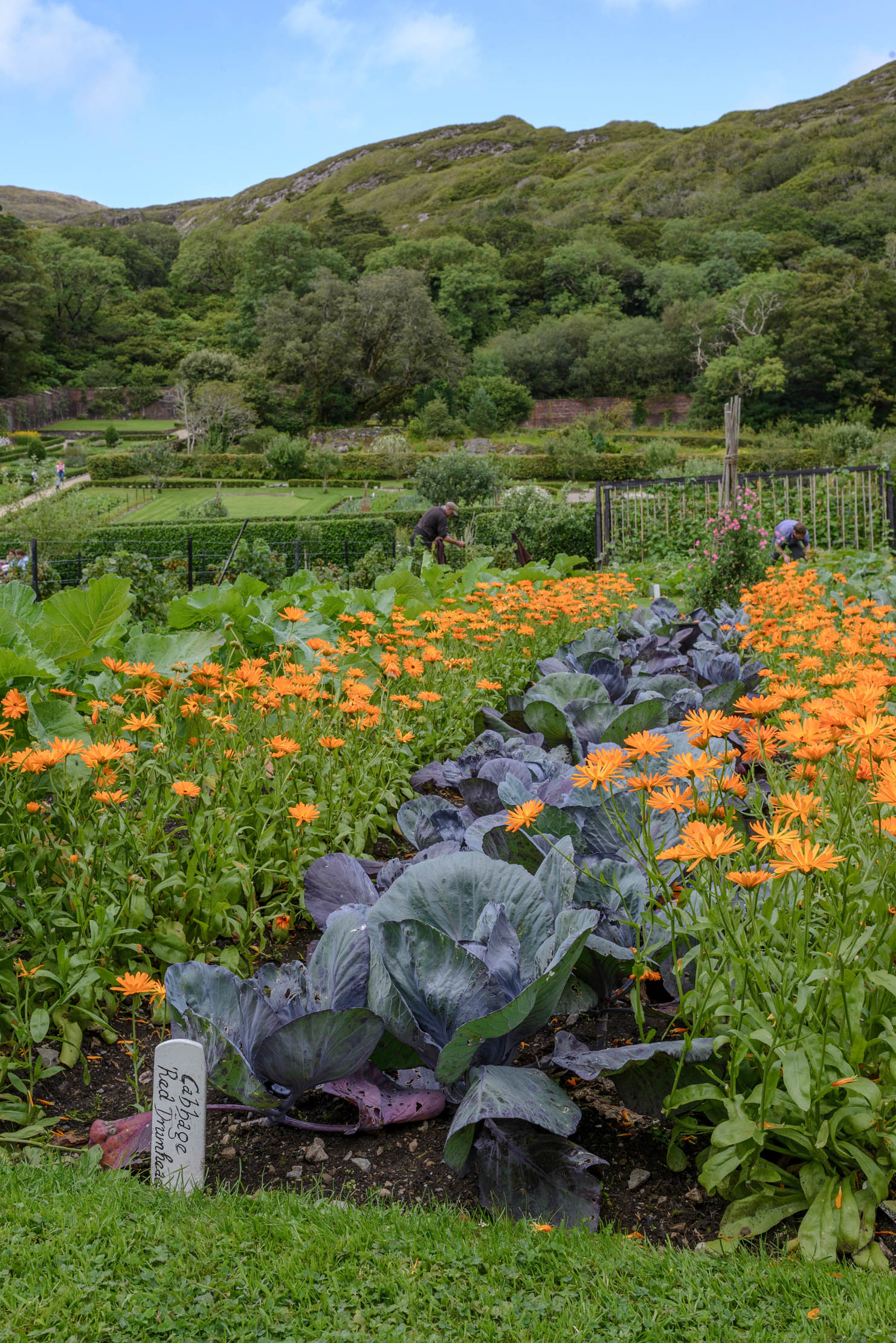
‘This is still very poor, boggy land,’ Anja explains. ‘We use as much natural mulch as we can, including seaweed collected locally. I pile it on fresh. We don’t even wash it. It’s excellent for reducing damage done by root fly and leather jackets to brassicas.’ Each of the exhibition squares includes a plot of green manure, which is strimmed down, then covered with rotted farmyard manure and black plastic. ‘When the plastic is rolled back four to six months later, I have a clean, fertilised plot.’
A favourite with visitors today, this peaceful site was loved by award-winning author and cartographer Tim Robinson, who died last year. He considered Connemara ‘one of earth’s wonders’ and in his book, Connemara: The Last Pool of Darkness, he recalls the mid-19th-century tourist pioneers who came here in search of the Picturesque, the Beautiful and the Sublime. ‘The Sublime came into play,’ he writes, ‘especially [as they travelled through] the Pass of Kylemore.’ Thanks to the Benedictine community that holds the estate in its careful custody, the future of Kylemore is secure.
Kylemore Abbey, Connemara, Co Galway, Ireland — www.kylemoreabbey.com
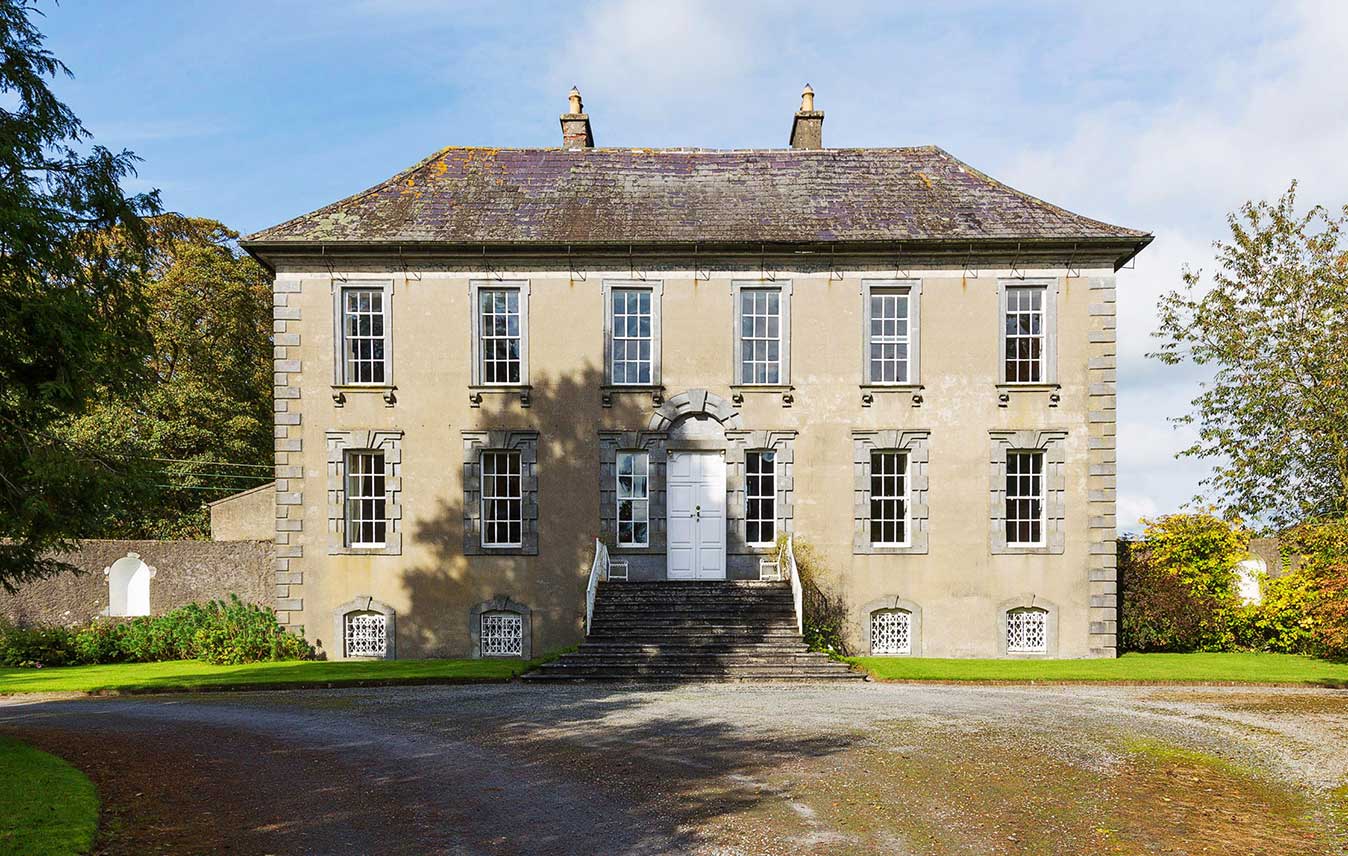
One of Ireland's 'most perfect' houses finds a new owner
Penny Churchill reports on a major move in the Irish property market which suggests that things could be beginning to

Credit: Strutt and Parker
Best country houses for sale this week
An irresistible West Country cottage and a magnificent Cumbrian country house make our pick of the finest country houses for
Country Life is unlike any other magazine: the only glossy weekly on the newsstand and the only magazine that has been guest-edited by HRH The King not once, but twice. It is a celebration of modern rural life and all its diverse joys and pleasures — that was first published in Queen Victoria's Diamond Jubilee year. Our eclectic mixture of witty and informative content — from the most up-to-date property news and commentary and a coveted glimpse inside some of the UK's best houses and gardens, to gardening, the arts and interior design, written by experts in their field — still cannot be found in print or online, anywhere else.
-
 Diamonds are everyone's best friend: The enduring appeal of one of Nature's sparkliest treasures
Diamonds are everyone's best friend: The enduring appeal of one of Nature's sparkliest treasuresEvery diamond has a story to tell and each of us deserves to fall in love with one.
By Jonathan Self
-
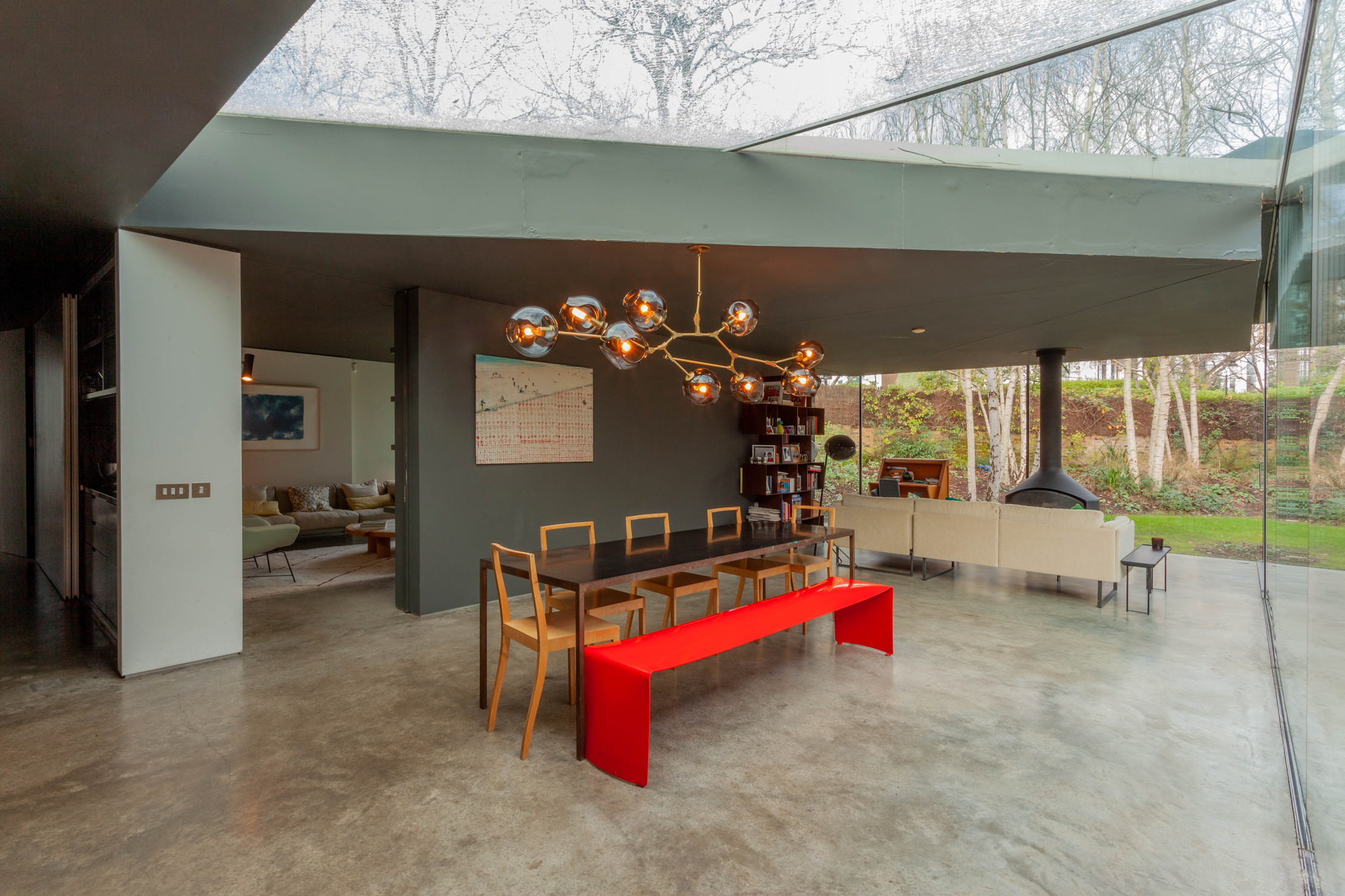 Hidden excellence in a £7.5 million north London home
Hidden excellence in a £7.5 million north London homeBehind the traditional façades of Provost Road, you will find something very special.
By James Fisher